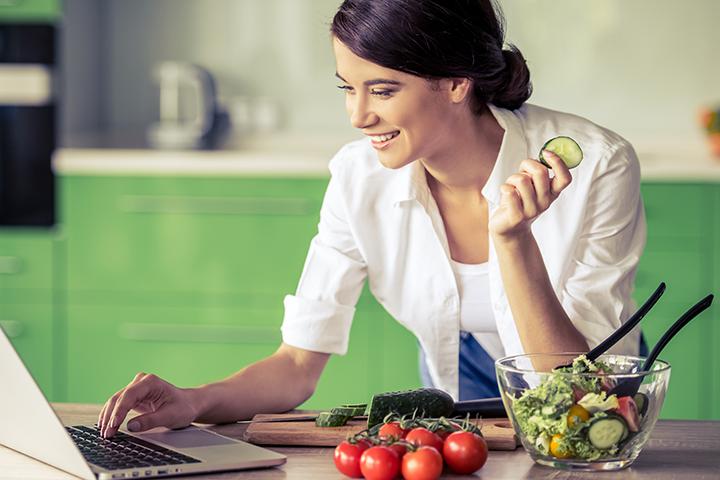Pancreatitis is a disease of the pancreas, in which the inflammatory process begins in the body. Depending on the clinical picture, doctors distinguish acute and chronic pancreatitis. These two forms of pancreatitis differ due to occurrence, etiology, as well as the choice of treatment method and prognosis of recovery. It is important to consider the list of prohibited foods for pancreatitis.
Disease Description
Pancreatitis is an inflammatory process in which pancreatic tissue, internal organs, and exocrine functions are severely damaged. The pancreas is located behind the stomach in the abdominal cavity and is adjacent to the duodenum.
The main function of the pancreas is to produce pancreatic juice, which is actively involved in the digestion process.
When waiting for food intake and its entry into the stomach, enzymes and juices begin to pass from the pancreas through the connecting duct into the small intestine, which helps to restore metabolic processes in the body and ensure the absorption of food components through the walls of the small intestine. Pancreatic fluid eliminates the acidic environment of the gastric juice in the intestines, where the digestive enzymes are activated and begin to fulfill their functions of splitting and processing components.

The main digestive enzymes that are produced by the gland include:
- amylase, which helps to properly process starch;
- lipase - an enzyme that provides accelerated breakdown of fat;
- trypsin, chymotrypsin - enzymes that are actively involved in the process of protein breakdown;
- insulin, glucagon.
Causes of the disease
The main reason for the development of the disease includes a violation in the outflow of pancreatic juice from the pancreas to the duodenum. Lingering inside the gland with full or partial overlapping of the ducts, as well as when they throw intestinal contents into them, the enzymes come into work much earlier, provoke processing, as well as digest adjacent tissues.
The delay in juice and enzymes during pancreatic inflammation adversely affects the state of pancreatic tissue, but with prolonged exposure, the accumulating enzymes of the pancreas and pancreatic juice begin to actively transfer to tissues of other organs and blood vessels.
Deforming cells provoke increased activity of digestive enzymes, involving more and more sites in this process. In especially serious situations, with pancreatic necrosis, pancreatitis can even lead to the death of the patient.
A large amount of digestive juice and enzymes is necessary for processing carbohydrate foods. When consuming excessive amounts of fatty and spicy foods, which contain many spices, as well as taking alcoholic beverages, the enzymes linger directly in the pancreas. Other negative factors can be the reasons for the delay in digestive enzymes and juices.
How to eat with pancreatitis?
It is important to remember that there are prohibited and permitted foods in pancreatitis. The preparation of the right diet for problems with the pancreas occurs taking into account the following rules:
- The food is machined. All solid foods should be well cooked, mashed, and ground.
- Food is cooked by boiling, steaming, or in a slow cooker. It is forbidden to fry, smoke, salted and canned foods.
- You can’t eat too much. The stomach should receive small portions of food, but often. The best diet will be every 3-4 hours, and a few hours before bedtime is allowed to drink only a glass of water or herbal tea.
- All food must remain fresh, especially fruits and vegetables. The meat is preferably chilled, not frozen. Milk has a normal shelf life.
- All dishes should be heated before use - not higher than 50 degrees Celsius, but not less than 20 degrees. It is forbidden to eat too hot food.

Also, experts recommend getting rid of bad habits. In this case, it is said not only about the use of nicotine and alcohol, but also about the tendency to snack on the run, at night. It is also important to consider prohibited foods for pancreatitis and cholelithiasis.
Extended list of prohibited products
It is important for the body in which inflammation is actively developing to give time for proper rest and recovery. What is forbidden to use during pancreatic pancreatitis? The list of products is quite wide:
- alcoholic drinks;
- fatty foods;
- lard, ducklings, goose, offal and lamb;
- fatty fish;
- canned foods and marinade;
- hard boiled eggs;
- fried main dishes, including scrambled eggs in the morning;
- mushrooms;
- spinach and sorrel;
- sweets, confectionery;
- flour products, pastries and pastries;
- carbonated drinks, coffee and cocoa;
- hot sauces and seasoning;
- fast food;
- raw onions, bell peppers, radishes and garlic;
- from fruits to the forbidden include cranberries, grapes, pomegranates, figs and dates.
Some foods can be beneficial or harmful at the same time. For example, low-fat cottage cheese or 1% kefir is the best, as it might seem, food with a diet. But with gastritis, dairy products with high acidity can greatly harm the body. What foods are prohibited for pancreatitis? It is possible or impossible to consume specific foods, in most cases it depends on the period of the disease (remission, chronic course, exacerbation, attack) or related diseases.

But it is important to remember that there is a list of prohibited foods for chronic pancreatitis. These include:
- any confectionery, sweets, ice cream, condensed milk, figs, dried apricots and nuts;
- all legumes;
- it is forbidden to eat any rich dishes - borsch, pickle, mushroom-based stew. Some cold soups are also prohibited - okroshka or beetroot soup;
- fatty meat, poultry and fish should be excluded from food, in particular this applies to lamb and pork;
- it is important to exclude all canned food, sausages, smoked meats and dried fish;
- with pancreatitis, you can not eat fried or hard-boiled chicken eggs;
- if we talk about dairy foods, then fat milk, cottage cheese, margarine and butter should be excluded;
- porridge is forbidden to cook from barley and millet;
- from vegetables you can not eat cabbage, peppers, onions, garlic and radishes.
Of course, you can’t eat any fast food and spicy food, coffee, carbonated drinks, grape juice.
Diet duration
The duration of the rejection of banned foods for adults and children will directly depend on the type of developing disease. It is important to carry out therapeutic measures for an acute form of the disease stationary, in the presence of an exacerbation of the chronic stage - on an outpatient basis. The duration of treatment for the disease will vary from 2 to 3 weeks. The diet after eliminating the main symptoms of the lesion should be followed for six months.

Careful attitude to the pancreas helps prevent exacerbation of the disease and protect the patient from the development of diabetes. If the inflammatory process takes place in a chronic form, then it is important for a person to follow a proper diet throughout his life and exclude from the diet all prohibited foods. After the disease passes into a stable stage of remission, you need to continue to monitor your diet, since complete recovery in this condition does not yet occur.
Allowed Foods
There are allowed and prohibited foods for pancreatitis. The allowed specialists include:
- flour products: yesterday’s bread (it is best to choose rye, wheat and whole grain), crackers, home cooked, dried, bread.
- during the remission of the disease it is allowed to eat noodles and spaghetti (no more than 170 grams at a time);
- cereals: buckwheat, rice, semolina and oatmeal;
- fresh vegetables and greens: it is best to give preference to carrots, beets, pumpkin, eggplant, zucchini; every day it is allowed to add 1 tablespoon of chopped parsley, dill and celery;
- fish: it is allowed to eat the flesh of low-fat fish varieties (cod, pike perch and hake), boiled or cooked in a slow cooker;
- digestion of broths and homemade meatballs;
- seafood: sea kale;
- meat in food: for cooking steam cutlets, broth and meatballs it is best to use chicken, rabbit, turkey and low-fat veal;
- dairy products: low fat cottage cheese, cheese with normal or high acidity;
- omelet from quail and chicken eggs;
- Refined linseed, pumpkin and olive oil. With stable remission, creamy, but not more than 30 grams per day, is allowed;
- bananas and baked apples;
- bee products: bee milk, propolis;
- various spices and food additives: cumin, turmeric, cloves and fennel.

Confectionery
Sweets are included in the list of prohibited foods for pancreatic pancreatitis. A sufficient amount of natural sucrose to compensate can be found in berries and fruits. The allowed include stewed fruit, decoctions, puddings, casseroles and various jelly.
Sweets with pancreatitis are allowed to consume beekeeping products and honey in moderation. They are not only sweet in taste, but also favorably affect the condition of the gastrointestinal tract.

Tea and kefir can be supplemented with dryers or biscuit cookies. It is important to choose them in the dietary departments of the supermarket, as well as carefully study the composition on the package before purchasing.
With remission of the disease, nutritionists are allowed to consume a Bizet. But it will be best to cook it yourself, whipping the protein with a sugar substitute and drying in the oven at a low temperature.
Prohibited foods for pancreatic pancreatitis: ice cream, figs, chocolate, muffin, condensed milk and more. Since such products contain a large amount of sugar and fat, they will only exacerbate the disease.
Diet for gastritis
Prohibited foods for gastritis and pancreatitis include carbonated, tonic and alcoholic drinks, strong tea, coffee, fat milk, muffins, cheese and fresh bread, radishes, citrus fruits, mushrooms - all of these products are very poorly absorbed by the body and can provoke irritation of the gastrointestinal mucosa. intestinal tract.

Cooking Tips
There are a large number of products banned for pancreatitis and cholecystitis. It is important to remember that in a daily diet there should not be complex dishes in which there are many components. It will be much more useful to use simple mashed potatoes and meat or fish cue ball.
Even dishes of the same composition produce a different effect on the state of the gastric mucosa, as well as on the pancreas, if prepared using different methods. For example, with gastritis and a complicated form of pancreatitis, even a vegetable salad can be more beneficial for the body if you cook it not from fresh products, but boiled and add linseed oil to it, rather than sour cream. The same applies to other dishes.
Soups from healthy dietary foods are best prepared with vegetable broth for pancreatitis. In this case, the finished dishes should be well chopped and beat with a blender. Such preparation of soup is considered mandatory at the very beginning of the treatment of the disease.
Cereals that are used as an independent dish or as a side dish for fish and meat should also be boiled until a porridge with a viscous consistency, and then beat thoroughly with a blender. It is also allowed to add a small amount of olive and linseed oil.
It is best to cook meat and fish in the form of cutlets or meatballs. In this case, it is important to ensure that they do not come across particles of skin, tendons and cartilage. Cook food should be steamed, and use in conjunction with mashed potatoes or a side dish of cereals.
Coffee and tea are best brewed lightly, do not add sugar and its substitutes, sometimes you can add milk. Simple drinking water is best replaced with a rosehip broth or mineral water without gas.
To include new products in everyday nutrition, that is, to make the menu larger, should only be after the signs of the disease have been completely eliminated. At the same time, it is important to monitor the general condition of the body, and if any symptoms of problems in the digestive system appear, again limit yourself to nutrition.
What will happen if you do not follow proper nutrition?
If you do not limit yourself to the use of harmful products, then pancreatitis can very quickly grow to the form of a stomach ulcer, as severe bleeding can open in the damaged mucous membrane. Due to problems with the outflow of bile, there is a risk that hepatitis will begin in the body, and this is already very dangerous for humans.
If you do not follow proper nutrition, the disease can provoke various complications and concomitant diseases:
- duodenal obstruction;
- gastritis;
- cholecystitis;
- gallstone disease;
- splenic vein thrombosis;
- the formation in the body of cysts and tumors of a malignant form.
In addition, diabetes is considered a regular concomitant disease in pancreatitis. The pancreas is responsible for the production of enzymes involved in the reproduction of insulin and the digestive system. The list of prohibited foods for pancreatitis is quite wide, the transition to such a diet provides for a fairly serious review of eating habits, but it must be remembered that only following a strict diet and avoiding harmful foods will help prevent the pathological development of pancreatitis and restore the patient’s health.
To determine the state of the organ and prevent the development of complications, it is important to go to the doctor in a timely manner, who will conduct a comprehensive diagnostic examination and prescribe effective treatment for the lesion. Only a doctor can make a safe and proper diet for pancreatitis.